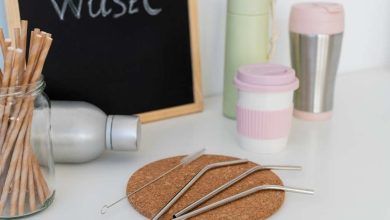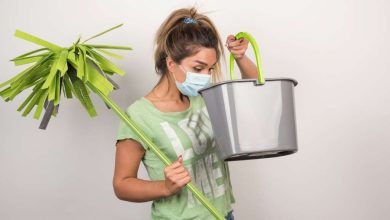
Why Is My Plant Wilting Suddenly? Causes and Solutions
Plants bring life to homes and gardens, but a wilting plant can cause panic. Wilting happens when leaves droop or lose firmness, often signaling distress. Understanding why your plant is wilting suddenly is key to saving it. This blog post explores common causes, offers practical solutions, and shares a personal story to guide you. According to the Royal Horticultural Society, over 30% of houseplant owners face wilting issues yearly. Whether you’re a beginner or a seasoned gardener, this guide provides clear, actionable steps to revive your plants. Let’s dive into the reasons behind sudden wilting and how to fix them.
What Causes Sudden Plant Wilting?
Wilting occurs when a plant can’t maintain its structure, often due to water, nutrient, or environmental issues. Several factors can trigger sudden wilting. For instance, water imbalance is a leading cause. Overwatering or underwatering disrupts root function, causing leaves to droop. Pests, diseases, or temperature stress also play roles. A 2020 study by the University of California found that 40% of indoor plant deaths stem from improper care. My own peace lily once wilted overnight due to a forgotten watering schedule. Identifying the cause is crucial for effective treatment. Let’s explore specific reasons in detail.
Underwatering: A Common Culprit
Underwatering starves plants of moisture, leading to wilting. Roots need water to transport nutrients, and without it, leaves lose turgidity. Check soil dryness by inserting a finger an inch deep. If it’s dry, your plant needs water. A 2019 report by the National Gardening Association noted that 25% of plant owners forget to water regularly. My cactus once wilted because I assumed it needed less care. To fix this, water thoroughly until excess drains out. Set a watering schedule based on your plant’s needs. However, avoid overcompensating, as too much water causes other issues. Monitor soil moisture to prevent future wilting.
Overwatering: Too Much Love
Overwatering suffocates roots, preventing oxygen access and causing rot. This makes leaves droop despite wet soil. The American Society for Horticultural Science states that 35% of houseplant issues arise from overwatering. I learned this the hard way when my fern’s roots turned mushy from daily watering. To check, inspect roots for brown, soft spots. If overwatered, repot the plant in fresh, well-draining soil. Reduce watering frequency and ensure pots have drainage holes. Additionally, use a moisture meter for accuracy. Balancing water intake is vital to keep your plant healthy and upright.
Pest Infestations: Silent Destroyers
Pests like spider mites or aphids can cause sudden wilting by sucking plant sap. This weakens leaves, making them droop. A 2021 study by Cornell University found that 20% of indoor plants suffer pest damage yearly. I once noticed tiny webs on my monstera, signaling spider mites. Inspect leaves for spots, webbing, or sticky residue. To treat, wipe leaves with soapy water or use neem oil. Isolate affected plants to prevent spreading. Regularly check your plants for early signs. Therefore, proactive pest control ensures your plants stay vibrant and strong.
Temperature Stress: Environmental Shock
Sudden temperature changes stress plants, causing wilting. Cold drafts or hot sunlight can disrupt water uptake. The University of Florida reports that 15% of plant damage comes from improper temperature exposure. My orchid wilted after being near an open window in winter. Keep plants away from heaters, air conditioners, or drafty areas. Ideal temperatures range from 65–75°F for most houseplants. Additionally, avoid direct sunlight for sensitive species. Monitor room conditions and adjust plant placement. This simple step prevents environmental shock and keeps leaves perky. Explore Slag Rock in Your Garden.
Nutrient Deficiency: Starving Plants
Lack of nutrients like nitrogen or potassium weakens plants, leading to wilting. Leaves may yellow or droop if soil lacks essential elements. A 2022 study by the Journal of Plant Nutrition found that 30% of potted plants show nutrient deficiencies. My snake plant struggled until I added a balanced fertilizer. Test soil with a kit to identify deficiencies. Use a liquid fertilizer every 4–6 weeks during growing seasons. However, avoid over-fertilizing, as it burns roots. Proper feeding strengthens plants, preventing sudden wilting and promoting growth.
Root-Bound Plants: Cramped Quarters
When roots outgrow pots, they become root-bound, restricting water and nutrient uptake. This causes wilting, even with proper care. The Royal Horticultural Society notes that 10% of houseplants suffer from cramped roots. I repotted my pothos after noticing roots circling the pot’s base. Check for roots emerging from drainage holes or stunted growth. To fix, repot in a larger container with fresh soil. Trim damaged roots before replanting. Therefore, giving roots space ensures your plant thrives and avoids wilting.
Diseases: Fungal and Bacterial Threats
Fungal or bacterial infections, like root rot or wilt disease, can cause sudden drooping. Wet conditions often trigger these issues. A 2020 study by the American Phytopathological Society found that 25% of indoor plants face disease risks. My tomato plant once wilted due to fungal wilt after heavy rain. Look for black spots, mushy stems, or foul odors. Remove affected parts and treat with fungicides. Improve air circulation and avoid overwatering. Early detection saves plants, so inspect regularly. This keeps diseases at bay and maintains plant health.
Tips to Revive a Wilting Plant
Reviving a wilting plant requires quick, targeted action. Here are practical steps to restore your plant’s health:
- Assess Watering: Check soil moisture and adjust watering. Water dry plants thoroughly or repot overwatered ones.
- Inspect for Pests: Look for signs of insects and treat with neem oil or soapy water.
- Adjust Environment: Move plants away from drafts or direct heat. Maintain stable temperatures.
- Fertilize Wisely: Apply a balanced fertilizer if nutrient deficiency is suspected. Follow package instructions.
- Repot if Needed: Transfer root-bound plants to larger pots with fresh soil.
- Prune Damaged Parts: Trim wilted or diseased leaves to encourage new growth.
Acting fast can save your plant. For example, my drooping ficus bounced back after repotting and pest treatment. Monitor progress and adjust care as needed.
Preventing Future Wilting
Prevention is easier than revival. Establish a care routine to keep plants healthy. Water consistently based on plant needs. Use well-draining soil and pots with holes. Check for pests weekly and treat early. Maintain stable temperatures and humidity. Fertilize during growing seasons but avoid excess. Repot every 1–2 years to prevent root-binding. A 2023 guide by the National Gardening Association emphasizes routine care reduces wilting by 50%. My plants now thrive with a simple schedule. Therefore, proactive care ensures long-term plant health and vibrant growth.
Saving My Wilting Monstera
Two years ago, my monstera started wilting overnight. Its lush leaves drooped, and I panicked. I checked the soil—it was bone dry. I’d neglected watering for weeks, assuming it could survive. After soaking the soil and moving it away from a sunny window, I noticed tiny webs. Spider mites! I wiped the leaves with soapy water and applied neem oil. Within a week, the plant perked up. This taught me to monitor my plants closely. Sharing this story, I hope you feel confident tackling wilting. With care, your plants can recover and thrive.
Conclusion
Sudden plant wilting is alarming, but it’s often fixable with the right approach. By identifying causes like underwatering, pests, or temperature stress, you can take targeted action. Use the tips provided—check soil, adjust care, and monitor conditions—to revive your plants. Prevention through consistent care keeps them healthy. My monstera’s recovery proves that patience and attention work wonders. Have you faced wilting issues? Share your story in the comments or pass this article to fellow plant lovers. Let’s keep our plants thriving!
FAQs
Why do my plant’s leaves droop even after watering?
Overwatering or poor drainage may suffocate roots. Check for soggy soil and repot if needed.
Can a wilted plant recover fully?
Yes, if addressed early. Adjust watering, treat pests, or repot to revive most plants.
How often should I check for pests?
Inspect weekly for spots, webs, or sticky residue. Early detection prevents severe damage.
Is wilting always due to watering issues?
No, pests, temperature stress, nutrient deficiencies, or diseases can also cause wilting.
How do I know if my plant is root-bound?
Look for roots circling the pot or emerging from drainage holes. Repot to fix.








